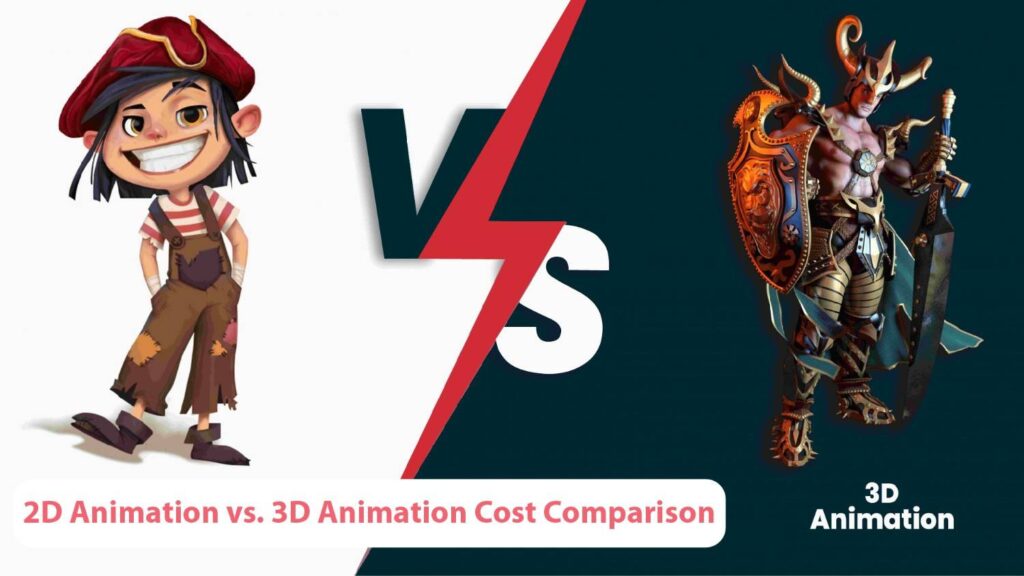
In today’s visually-driven world, animation is one of the most powerful tools for storytelling, marketing, and entertainment. Whether you’re a startup launching a new product, a filmmaker building a world, or a brand looking to engage customers on social media, animation gives your message life. But there’s one question every project owner asks: How much will it cost?
In this post, we’re diving deep into the 2D animation cost vs. 3D animation cost landscape in 2025. You’ll learn what to expect when budgeting, key cost drivers, real-world pricing ranges, and most importantly—which style gives you the most bang for your buck.
2D vs. 3D Animation: Which Is More Affordable?
Let’s start with the big-picture comparison: 2D vs. 3D animation: Which is more affordable?
2D Animation
2D animation typically involves creating flat characters and scenes, either drawn by hand or digitally using vector tools. It tends to be faster and more affordable—especially for short projects.
- Lower software/hardware requirements
- Faster production timelines
- Ideal for explainer videos, mobile content, educational content
3D Animation
3D animation involves modeling objects in a three-dimensional space and animating them using physics, lighting, and rigging. It’s powerful, but also resource-heavy.
- More time-consuming
- Higher rendering costs
- Perfect for film, gaming, AR/VR, and product visualization
If you’re looking for visual richness and realism, 3D is your go-to—but expect to pay more. For stylized, cost-effective storytelling, 2D remains the winner in terms of affordability.
So yes, when it comes to 2D vs. 3D animation: Which is more affordable?—2D animation takes the crown for cost-efficiency.
How Much Does 2D Animation Cost Per Minute in 2025?
To give a clear sense of value, let’s explore how much does 2D animation cost per minute in 2025.
The price can vary dramatically based on style, complexity, location, and who’s doing the work (freelancer, studio, or in-house team). Here’s a breakdown:
| Quality Level | Cost per Minute (USD) |
|---|---|
| Entry-Level (Basic Explainers) | $500 – $1,200 |
| Mid-Tier (Branded Content) | $1,500 – $4,000 |
| High-End (TV/Film-Quality) | $5,000 – $15,000+ |
These prices often include:
- Scriptwriting
- Storyboarding
- Voiceover
- Backgrounds
- Animation
- Sound design
However, complex character movements, multiple scenes, or original music can increase the final quote. Still, 2D remains more cost-effective compared to 3D across most use cases.
The 3D Animation Pricing Guide for 2025
When it comes to 3D animation, pricing becomes a bit more layered. Here’s a comprehensive 3D animation pricing guide for 2025 to help you estimate costs.
| Quality Level | Cost per Minute (USD) |
|---|---|
| Entry-Level (Product Demos, Simple Walkthroughs) | $2,000 – $5,000 |
| Mid-Tier (Explainers, Stylized Characters) | $6,000 – $12,000 |
| High-End (Film, Games, VFX) | $15,000 – $50,000+ |
Why the jump?
3D animation projects often involve:
- 3D modeling and texturing
- Character rigging
- Physics-based simulations
- Lighting and rendering
- Post-production compositing
Rendering alone can take hours or even days for a few seconds of high-quality footage. That’s why professional studios often charge more to cover tech infrastructure, licenses, and human labor.
This 3D animation pricing guide should give you a strong starting point when comparing vendors or planning internal resources.
Key Factors Affecting Animation Production Cost
No matter the style, there are several factors affecting animation production cost in 2025. Being aware of these variables can help you control scope and make smarter budget decisions.
1. Complexity of the Animation
The more movement, layers, and transitions involved, the more expensive the project becomes. Character-driven animation costs more than simple infographic styles.
2. Length of the Video
Longer videos require more design time, more scenes, and more post-production effort. Some studios charge per second, not just per minute.
3. Level of Detail
Do you need realistic textures or simple line art? Highly polished animations with shading, lighting, and shadows cost significantly more.
4. Voiceover and Sound Design
Hiring professional voice actors, custom music, or Foley sound effects will increase your total spend.
5. Revisions and Scope Changes
Unlimited revisions may sound great but can destroy your budget. Most vendors offer 1–2 rounds of changes in the base price.
6. Production Timeline
Rush projects often incur 20%–50% upcharges to meet tight deadlines.
7. Studio vs. Freelancer
Studios provide higher production value but also have higher rates. Freelancers are cheaper but may not have the capacity for larger projects.
All these factors affecting animation production cost can drastically impact your final bill—so always clarify scope and expectations before production begins.
Cost Comparison Example: 2D vs. 3D in Real-World Use Cases
To help you visualize the cost differences, let’s compare a few common project types.
✅ Explainer Video – 60 Seconds
- 2D Animation: $1,500 – $3,000
- 3D Animation: $4,000 – $10,000
Verdict: 2D wins for startups and small businesses needing to explain products quickly and affordably.
✅ Product Visualization – 30 Seconds
- 2D Animation: $1,000 – $2,500
- 3D Animation: $5,000 – $12,000
Verdict: 3D wins for physical products, allowing customers to “see” the item from every angle.
✅ Character-Based Marketing Spot – 90 Seconds
- 2D Animation: $4,000 – $7,000
- 3D Animation: $12,000 – $30,000+
Verdict: 2D is ideal for brand mascots or narrative-driven content on a budget. 3D adds cinematic flair if you have the funds.
When Should You Choose 2D Over 3D?
2D animation is a great fit if your goals include:
- Quick turnaround time
- Budget-conscious campaigns
- Simple storytelling
- Mobile-friendly formats
- Social media ads or YouTube explainers
You’ll also benefit from a large pool of talent, since 2D animators are more accessible and versatile across styles.
When Is 3D Worth the Investment?
Choose 3D animation when:
- Realism and depth are essential
- You’re marketing physical products or machinery
- You’re developing a game or immersive experience
- You want a “wow” factor in presentations or launches
- Your content will be repurposed across multiple platforms (AR/VR, interactive, etc.)
The higher costs are justified when your animation needs to be hyper-polished, lifelike, or reusable across different formats.
How to Reduce Costs Without Compromising Quality
Animation doesn’t have to break the bank. Here are a few smart ways to keep costs down:
1. Reuse Existing Assets
Repurpose characters, environments, or branding elements from past projects.
2. Keep Scripts Tight
Shorter videos aren’t just more engaging—they’re cheaper.
3. Opt for Motion Graphics
Simplified 2D motion graphics can still look high-end without intensive animation.
4. Use Templates or Pre-Rigs
Some studios and freelancers use rig libraries and animation templates to speed up work.
5. Outsource Strategically
Hiring international teams or remote freelancers can reduce costs significantly, but always vet portfolios carefully.
The Verdict: Which Animation Style Is Right for You?
So when comparing 2D animation cost vs. 3D animation cost, the decision comes down to:
- Budget
- Project Goals
- Timeline
- Visual Style
If you’re aiming for flexibility, affordability, and faster results, 2D is still the go-to choice for most brands and creators in 2025.
But if your vision demands depth, realism, or interactive potential, 3D is well worth the investment—especially when paired with emerging technologies like AR, VR, and real-time rendering.
Final Thoughts
Animation continues to be a game-changer across industries—from marketing and gaming to education and enterprise. And in 2025, it’s more accessible and customizable than ever.
Understanding the 2D animation cost vs. 3D animation cost, knowing how much 2D animation costs per minute, referencing a reliable 3D animation pricing guide, and being aware of the factors affecting animation production cost can help you make the right investment—both creatively and financially.
Still wondering whether 2D or 3D is right for your project? Start by defining your goals, budget, and target audience. Then let your story—and your numbers—guide you from there.
Frequently Asked Questions (FAQ’s)
What factors influence the cost of 2D animation?
The cost of 2D animation is influenced by several factors, including:
- Complexity: More detailed characters and backgrounds increase costs.
- Art Style: Simple styles are less expensive; detailed styles can be more costly.
- Length: Longer animations require more production time, increasing costs.
- Studio Experience: Experienced animators typically charge more.
- Software & Tools: Specialized software can add to the cost.
- Finishing Touches: Additional elements like voice acting and sound design affect the budget.
- Revisions & Changes: Extensive revisions can significantly increase costs.
What factors influence the cost of 3D animation?
The cost of 3D animation is affected by:
- Complexity: Detailed 3D models and environments drive up costs.
- Art Style: Realistic or intricate styles are more expensive.
- Length: Longer projects increase production time and cost.
- Studio Experience: Experienced 3D animators command higher fees.
- Software & Tools: High-powered animation software can be costly.
- Finishing Touches: Costs for additional elements like sound and voice work.
- Revisions & Changes: Changes after initial production can raise costs.
How do the costs of 2D and 3D animation compare?
- 2D Animation: Generally less expensive, ranging from $5,000 to $25,000 per minute depending on complexity.
- 3D Animation: Typically more costly, ranging from $15,000 to over $50,000 per minute due to the need for advanced modeling and rendering.
Why is 3D animation usually more expensive than 2D animation?
3D animation involves creating detailed digital models, realistic textures, and complex animations. This requires more advanced software and hardware, as well as more time and expertise, contributing to higher costs.
Can the location of the animation studio affect the cost?
Yes, animation studio rates can vary based on location. Studios in different regions may have different pricing structures, so exploring options beyond your local area can impact your budget.





